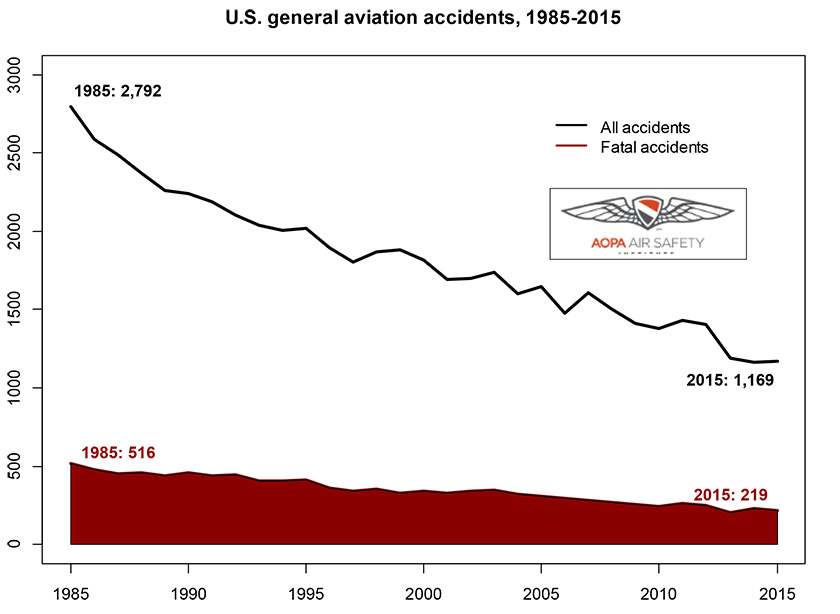AOPA responds to crash report
NBC story lacks context, clarity
A tragic midair collision over Georgia prompted a quick response from NBC, which had a story on the air within hours of the fatal accident at West Georgia Regional Airport. The NBC Nightly News report cast a critical eye on general aviation safety. AOPA responded quickly to the news organization, noting missed opportunities for clarity, missing context, and mistaken notions that the 90-second report could create in the minds of viewers.

AOPA President Mark Baker spoke to the network Sept. 8 to express the association's concerns.
Omitted from the NBC report was context including the steady decline in GA accidents, and the decline in GA accident rates, recorded in recent years. The AOPA Air Safety Institute published the twenty-fifth edition of the Joseph T. Nall Report in August, noting unprecedented success in accident rate reduction.
 The Air Safety Institute is not alone noting the gains and improvements: The Wall Street Journal wrote in April about a decline in GA accidents; Bloomberg reported in August on indications that technology has helped improve GA safety; Newsday noted in May that despite a local increase in GA crashes, the overall rate of fatal accidents is down.
The Air Safety Institute is not alone noting the gains and improvements: The Wall Street Journal wrote in April about a decline in GA accidents; Bloomberg reported in August on indications that technology has helped improve GA safety; Newsday noted in May that despite a local increase in GA crashes, the overall rate of fatal accidents is down.
The government’s experts also have concurred in recent years with the basic assessment that GA safety continues to improve. FAA Deputy Administrator Michael Whitaker spoke of progress during a GA safety summit in March, when he highlighted ongoing efforts to further reduce accidents through implementation of new technology. The NTSB noted in 2014 that GA accidents had decreased “in all measures,” based on 2013 accident data.
AOPA is well aware that such context is often lost, or tossed aside, when tragedy strikes in dramatic fashion. Association staff work routinely to educate reporters and news organizations about the successes as well as the challenges of aviation safety, and the imperative to allow experts and investigators to do their work before drawing conclusions about any particular incident. At the same time, the Air Safety Institute draws on lessons that are learned with the completion of thorough accident investigations to keep pilots aware of trends, technology, and practices that are expected to continue improving aviation safety in years to come.




